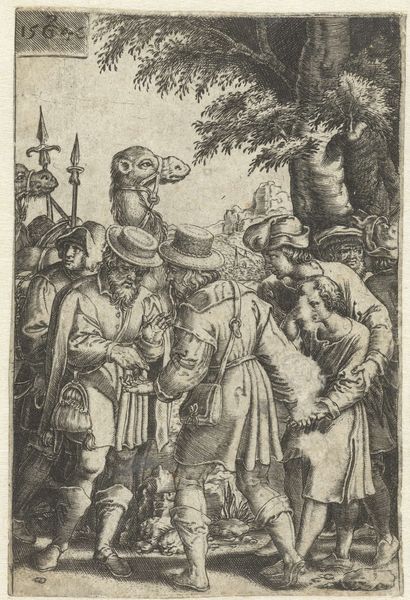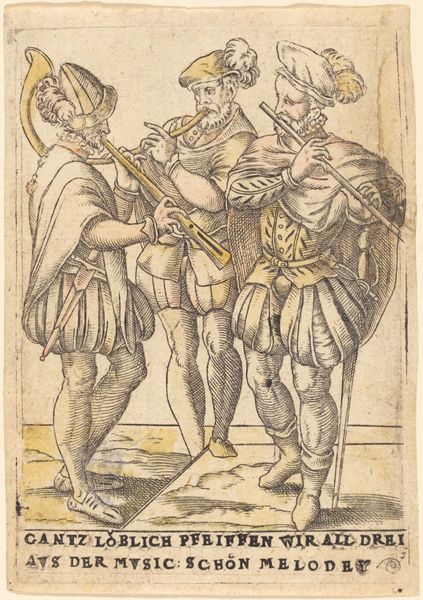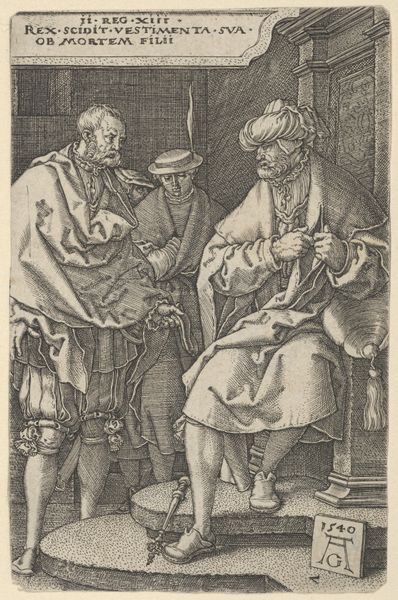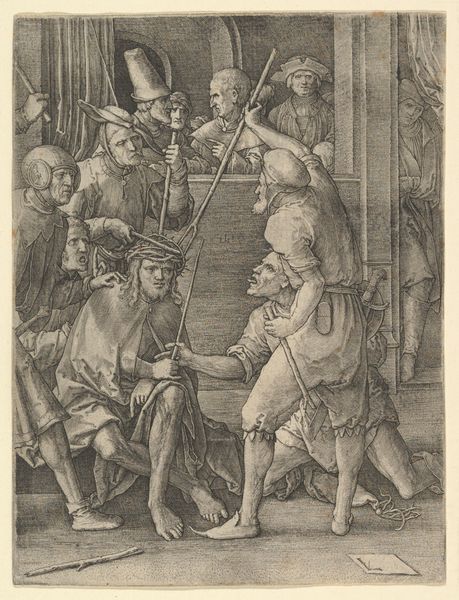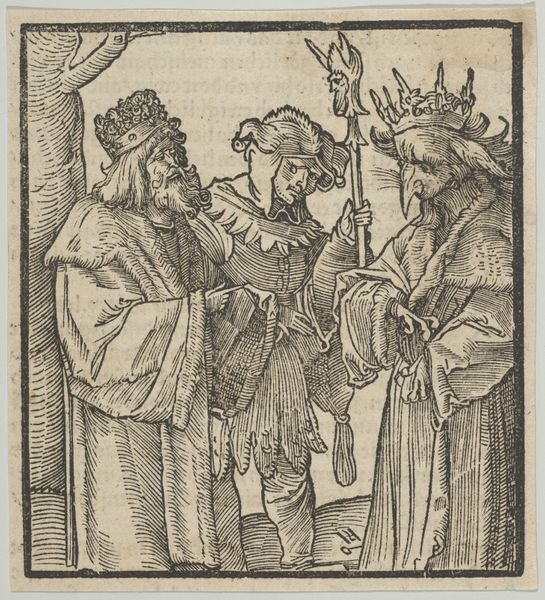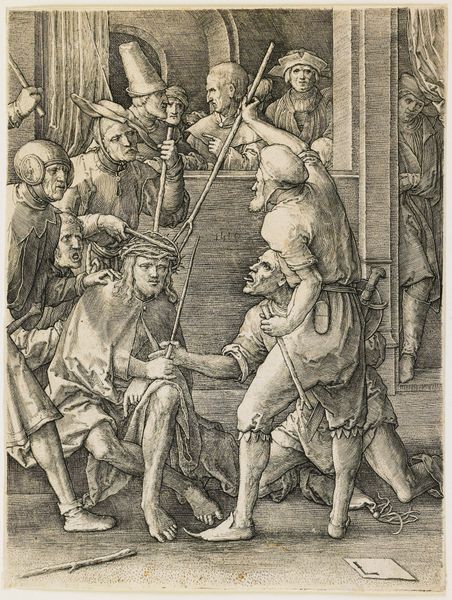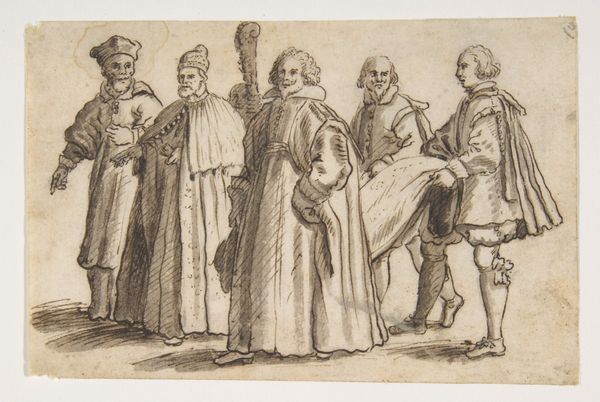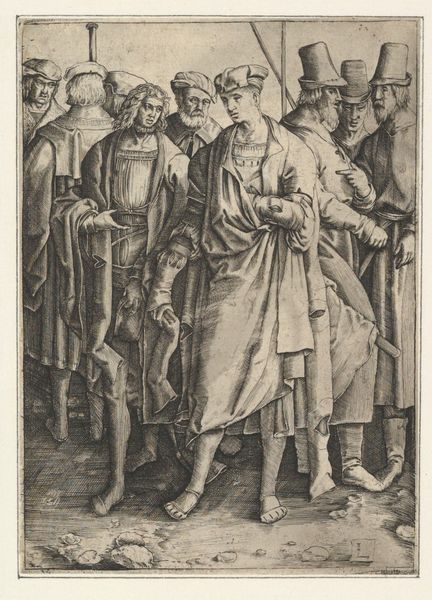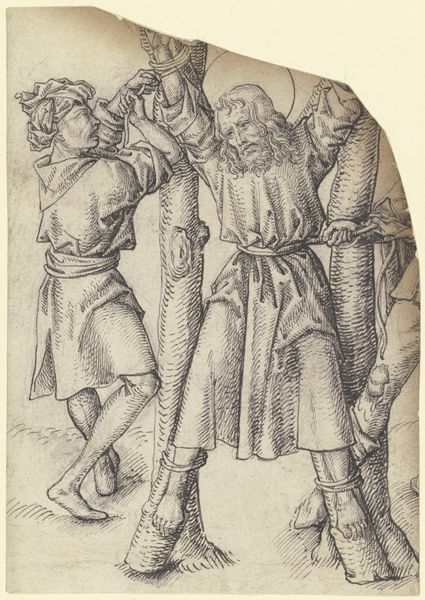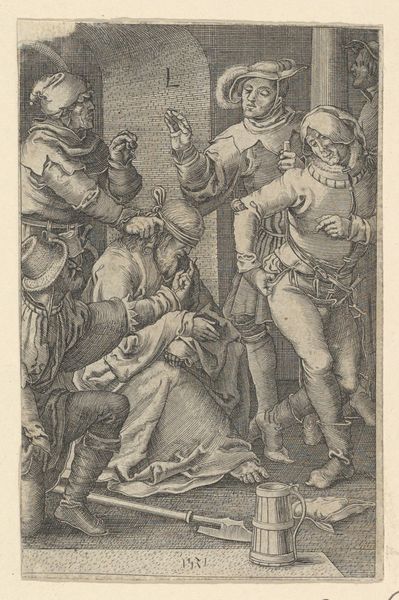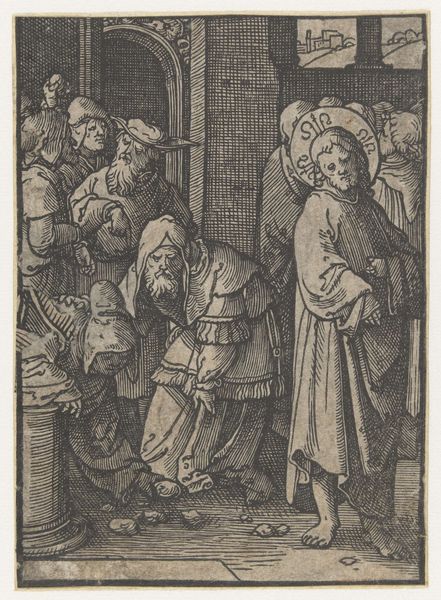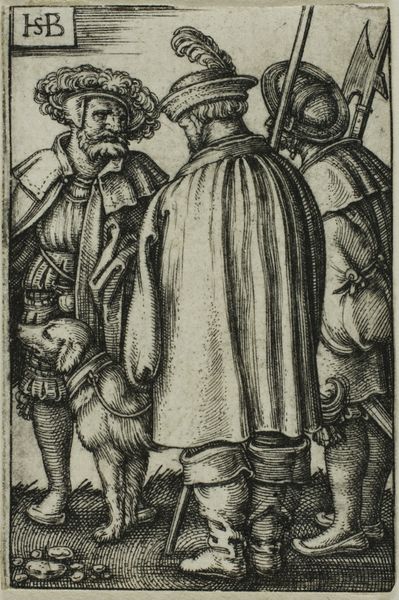
print, engraving
#
portrait
# print
#
figuration
#
11_renaissance
#
line
#
genre-painting
#
northern-renaissance
#
engraving
Copyright: National Gallery of Art: CC0 1.0
Curator: Welcome! We’re looking at Heinrich Aldegrever’s engraving "Three Musicians," created in 1551. It’s a striking example of Northern Renaissance printmaking. Editor: My initial impression is one of organised cacophony! Three figures packed into a relatively small space, all blowing these...slightly comical horns. It's got a grounded, earthy feel to it, despite the potentially refined context of music-making. Curator: Indeed. Let's consider the materials and process first. Aldegrever, a German artist, was a master engraver. Notice the incredibly fine lines, all meticulously etched into a metal plate. The consumption of these prints speaks to a burgeoning market for art outside the traditional patronage system. We need to ask about the means of production. Who were his patrons, and what implications did this mode of dissemination hold? Editor: From an iconographic perspective, these instruments offer intriguing avenues. Horns often symbolize the hunt, masculinity, or even folly depending on the context. The seriousness on their faces, juxtaposed with the almost absurd shapes of the horns, gives them this almost burlesque edge. Music, after all, was often tied to dance and revelry, elements that could be interpreted morally during this era. It may reference cultural performances and festive rituals which were crucial expressions during this time. Curator: Precisely. Were these musical performances tied to the common people, and if so, what did Aldegrever gain by portraying the scene? Did the print trade democratise art? There were definitely financial benefits in reproducing art and appealing to broader audience, regardless of art knowledge. Editor: Notice, too, the prominent display of Aldegrever's monogram at the top right corner. This symbol serves as not only his mark but a potent signal to future art historians to help reconstruct authorship as a measure of influence within the contemporary print markets of the era. Curator: Very interesting. Considering the societal context, where would something like this engraving be displayed? In a book? Pasted to a wall? These factors all shape the purpose and meaning of the object. Editor: I think this image continues to invite diverse analyses precisely because of its layered symbols that reveal subtle clues and associations over time. We, today, reconstruct historical references to interpret it anew! Curator: A vital thing to do! And to consider this work within systems of making, patronage, trade and cultural context— that truly enriches our perception of Aldegrever’s art.
Comments
No comments
Be the first to comment and join the conversation on the ultimate creative platform.

